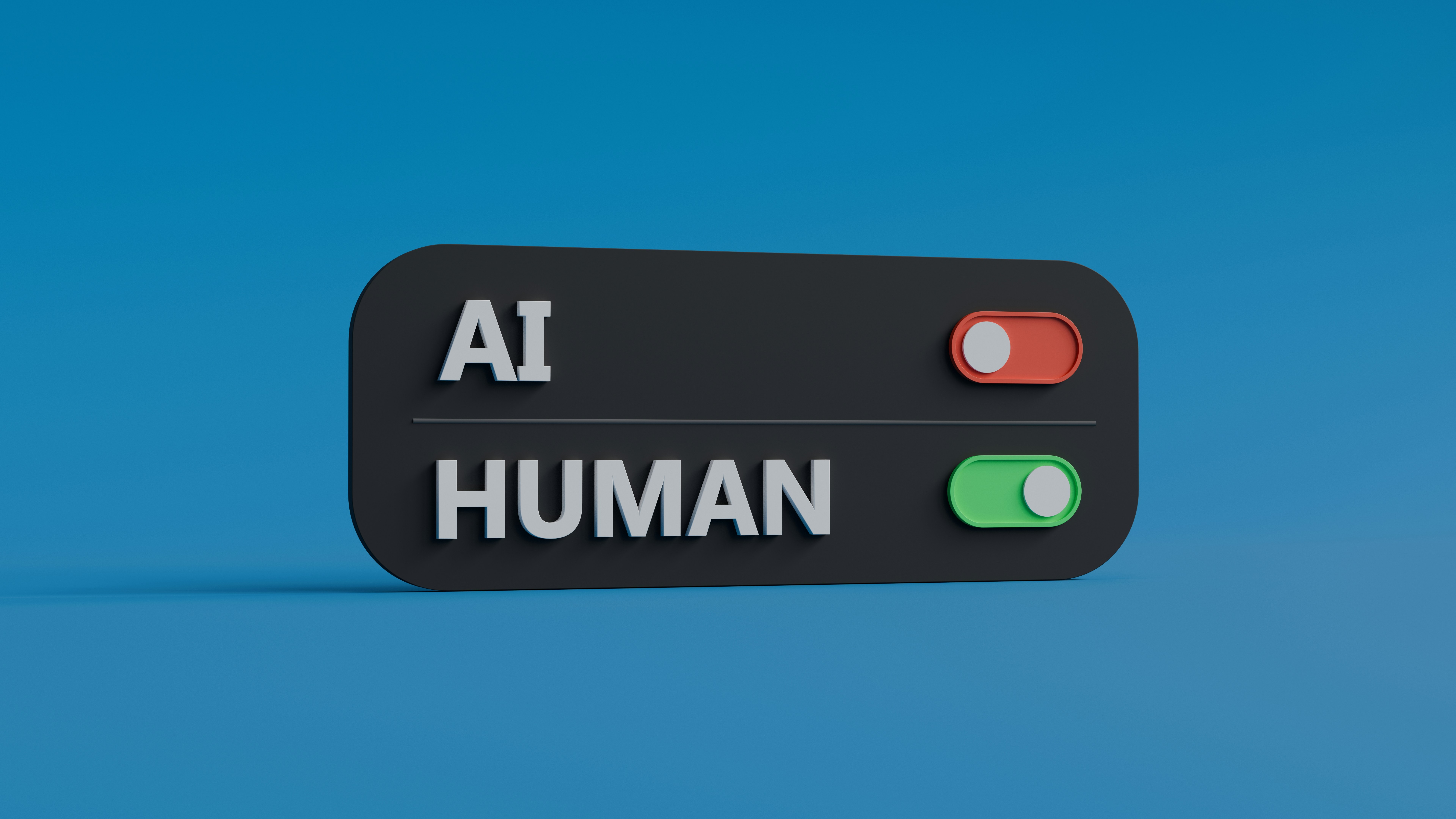Artificial intelligence (AI) is changing how people work across nearly every industry. From automating basic tasks to helping teams make faster decisions, AI is becoming a regular part of daily operations.
But as companies adopt AI tools, they are also asking new questions: What happens to the human side of work? How do people and machines work together without one replacing the other?
This article explores how AI is being used today, where humans still play a critical role, and how organizations are trying to maintain balance—especially when it comes to creativity and productivity.
Why AI Adoption Is Surging Across Industries
AI adoption has grown rapidly in recent years. According to Gartner, over 80% of enterprises are expected to use generative AI tools by 2026, compared to fewer than 5% in 2023. Around 40% of global jobs are now exposed to AI in some way.
Companies adopt AI mainly to:
-
Increase efficiency
-
Reduce costs
-
Stay competitive with others in their industry
AI can process large amounts of data quickly, perform repetitive tasks without getting tired, and support decision-making with data-driven insights. These capabilities allow teams to work faster and focus on more important tasks.
AI integration means applying AI tools directly into business processes. This includes using AI to generate reports, analyze customer behavior, schedule meetings, or recommend marketing strategies. In many cases, AI now works alongside humans, not separately from them.
Generative AI is one of the most common forms of AI today. It creates new content—such as text, images, code, or video—based on patterns it has learned from existing data. Examples include chatbots that write responses or tools that design images based on text descriptions.

As AI changes how work gets done, it also raises new challenges. While AI is good at speed and scale, humans still provide originality, emotion, and context—especially in areas like storytelling, design, leadership, and communication.
Where Humans Excel Most In The AI Era
AI can perform many tasks quickly and consistently. However, there are several areas where humans continue to do things that AI cannot replicate.
Creative Problem-Solving
Humans can generate original ideas and combine concepts in new ways. For example, during a product launch delay, a marketing team might shift strategy based on a cultural event that AI didn't recognize as relevant. This type of thinking comes from experience and the ability to make unexpected connections.
Emotional Intelligence
Humans recognize emotions in themselves and others, and respond appropriately. In team leadership, a manager might notice tension during a meeting and adjust their communication style. AI tools don't experience emotions and cannot fully interpret tone, body language, or unspoken social cues.
Ethical Decision-Making
While AI can follow programmed rules, it doesn't understand values or consequences. In hiring, a human resources leader may choose not to follow an AI recommendation if it seems unfair, even if the data supports it. This reflects ethical reasoning rather than just following algorithms.
Contextual Understanding
Humans interpret information based on environment, culture, and timing. AI often misinterprets slang, humor, or nuanced language. In customer service, a representative may recognize that a sarcastic comment isn't a complaint, while AI might flag it incorrectly.
"The most valuable skills in our economy come from combining human creativity with technology, not from humans competing against it." - Erik Brynjolfsson, Stanford Digital Economy Lab
Practical Ways To Merge AI And Human Creativity
Combining AI with human creativity involves assigning the right tasks to each. Here are practical approaches that work in real business settings:
1. Use AI For Routine Tasks And Analysis
AI excels at handling repetitive, time-consuming work. Examples include:
-
Data entry and organization
-
Scheduling appointments
-
Generating standard reports
-
Categorizing customer feedback
A financial team can automate monthly expense categorization using AI. This allows accountants to focus on analyzing trends or providing strategic advice instead of sorting numbers.
To identify good automation candidates, look for tasks that:
-
Follow a consistent process
-
Require processing large amounts of data
-
Don't need nuanced judgment
2. Encourage Human-Led Brainstorming With AI Support
AI can help generate ideas based on patterns it has learned, but humans should guide the creative direction. This approach works well for:
-
Product naming
-
Marketing campaign concepts
-
Content topic generation
-
Design exploration
During a product naming session, a team might ask an AI tool for suggestions related to the product's function and audience. The AI returns a list of options, and the team then evaluates them based on brand fit and market knowledge.
Effective prompting: When asking AI for creative input, include specific topic areas, constraints (like tone or format), and examples of what you're looking for.
3. Blend AI-Generated Content With Human Refinement
AI can create first drafts quickly, while humans add insight, emotion, and strategic alignment. This works well for:
-
Marketing materials
-
Basic reports
-
Product descriptions
-
Customer communications
A marketing manager might use AI to draft social media posts based on product information. The manager then edits for brand voice, audience relevance, and campaign messaging.
|
Task Type |
AI Advantage |
Human Advantage |
Best Approach |
|---|---|---|---|
|
Data analysis |
Speed, pattern recognition |
Context interpretation |
AI analysis with human interpretation |
|
Content creation |
Volume, consistency |
Originality, emotion |
AI drafting with human refinement |
|
Decision-making |
Processing multiple variables |
Ethical judgment, intuition |
AI recommendations with human final decisions |
|
Customer service |
24/7 availability |
Empathy, relationship building |
AI for routine questions, humans for complex issues |
How Effective Leadership Drives Successful AI Integration
Leaders play a key role in balancing AI and human contributions. Their approach determines whether AI enhances or diminishes human creativity and productivity.
1. Set Clear AI Goals Aligned With Business Objectives
AI goals should connect directly to business needs. For example:
-
Specific challenge: Customer service teams can't keep up with inquiry volume
-
AI solution: Implement a chatbot for common questions
-
Measurable goal: Reduce response time by 30% while maintaining customer satisfaction scores
A well-crafted AI objective includes what will be measured, by when, and how it connects to larger business goals.
2. Foster Collaboration Between Technical And Business Teams
AI projects often involve two groups with different perspectives:
-
Technical teams (data scientists, engineers)
-
Business units (marketing, operations, customer service)
To help these groups work together effectively:
-
Create cross-functional teams with both technical and business representatives
-
Use shared planning tools that everyone can access and understand
-
Hold regular meetings where each group explains progress in clear language
This approach ensures AI solutions are both technically sound and relevant to real business needs.
3. Provide Training For Both AI Tools And Human Skills
As AI becomes more common, employees need two types of training:
-
Technical skills: How to use AI tools effectively, how to provide good prompts, how to evaluate AI outputs
-
Human skills: Critical thinking, creativity, communication, and other abilities that AI can't replace
A balanced training program might include online courses about AI platforms alongside workshops on creative problem-solving or ethical decision-making.
Preventing AI Over reliance And Addressing Ethical Concerns
Using AI without careful oversight can lead to problems. These include bias in decision-making, privacy issues, and reduced human accountability.
1. Check For Bias Regularly
AI systems learn from historical data. If that data contains biased patterns, the AI will repeat them. This has affected hiring, lending, healthcare, and other important areas.
To reduce bias:
-
Review training data for problems before using it
-
Test AI outputs across different demographic groups
-
Include diverse perspectives when designing AI systems
Regular testing helps ensure AI systems remain fair as they process new information.
2. Protect Data Privacy While Using AI Effectively
AI often needs large amounts of data to work well. When this includes personal information, privacy becomes important.
Effective approaches include:
-
Data minimization: Collect only what's necessary
-
Anonymization: Remove identifying details
-
Clear policies: Be transparent about how data is used
Organizations must also follow regulations like GDPR in Europe or CCPA in California, which give people rights regarding their personal information.
3. Keep Human Oversight For Important Decisions
AI can provide recommendations, but humans should maintain control over decisions with significant impacts. Areas requiring human judgment include:
-
Hiring and promotion
-
Major financial decisions
-
Healthcare treatment plans
-
Customer escalations
A balanced approach categorizes decisions based on their importance:
-
Low-impact decisions: AI can handle independently
-
Medium-impact: AI recommends, humans review
-
High-impact: Humans make decisions with AI input
This ensures accountability while still benefiting from AI's efficiency.
Measuring Success In AI-Human Collaboration
How do you know if your approach to balancing AI and human work is effective? These measurement strategies can help:
1. Track Employee Engagement
Monitor how employees feel about working with AI tools through:
-
Regular surveys about job satisfaction and role clarity
-
Team discussions about workflow changes
-
Tracking participation in projects and meetings
This helps identify whether AI is enhancing or diminishing the employee experience.
2. Assess Output Quality And Efficiency
Measure both how fast work gets done and how good it is:
-
Speed metrics: Time to complete tasks, volume of work processed
-
Quality metrics: Accuracy, creativity, customer satisfaction
-
Comparison: Before-and-after measurements when AI is introduced
A balanced assessment looks at both productivity gains and whether the work meets quality standards.
3. Monitor Innovation Over Time
Track whether AI is helping or hindering creativity and new ideas:
-
How often teams try new approaches
-
The variety of solutions proposed for problems
-
How quickly ideas move from concept to implementation
These indicators show whether AI is supporting long-term adaptability and innovation.
Shaping The Future Of Work Through Strategic AI Integration
Balancing AI and human productivity means assigning tasks based on strengths. AI handles speed, repetition, and pattern recognition. Humans provide creativity, emotional intelligence, and ethical judgment.
Successful integration follows three principles:
-
Connect AI use to specific business goals
-
Keep humans in control of important decisions
-
Continuously improve both AI systems and human skills
In practice, this balanced approach might mean AI drafts a report, but a person refines the message. Or AI recommends a product strategy, but a team decides if it fits current market conditions.
Organizations that find this balance gain both efficiency and innovation—they work faster while maintaining the human creativity that drives long-term success.
For a personalized assessment of your organization's AI integration opportunities, schedule a free consultation with our team.
FAQs About Balancing AI And Human Creativity
How can organizations reduce employee resistance to AI implementation?
Clear communication about how AI will support (not replace) employees, early involvement in the implementation process, and role-specific training help reduce resistance. Demonstrating how AI handles routine tasks while preserving meaningful work is particularly effective.
What metrics show successful balance between AI efficiency and human creativity?
Three key indicators are employee engagement scores, quality ratings of creative output, and time saved on routine tasks. Organizations typically track these through surveys, output reviews, and workflow analytics to ensure both productivity and creativity are improving.
How should companies divide resources between AI tools and human skill development?
A balanced approach often allocates resources evenly between technology and training. Companies typically invest in AI infrastructure first, then shift toward upskilling programs once tools are in place, ensuring employees can work effectively with new systems.
What are the first steps in evaluating AI opportunities for a business?
Start by mapping current workflows, identifying repetitive tasks that consume significant time, and evaluating which processes require human judgment. This initial assessment helps determine where AI can provide the most value while preserving essential human contributions.
How quickly do businesses typically see results from balanced AI-human workflows?
Most organizations begin seeing measurable improvements within 3-6 months for simple implementations and 6-12 months for more complex ones. Initial gains usually appear in efficiency metrics, while creative improvements may take longer to fully develop.





Leave a Comment